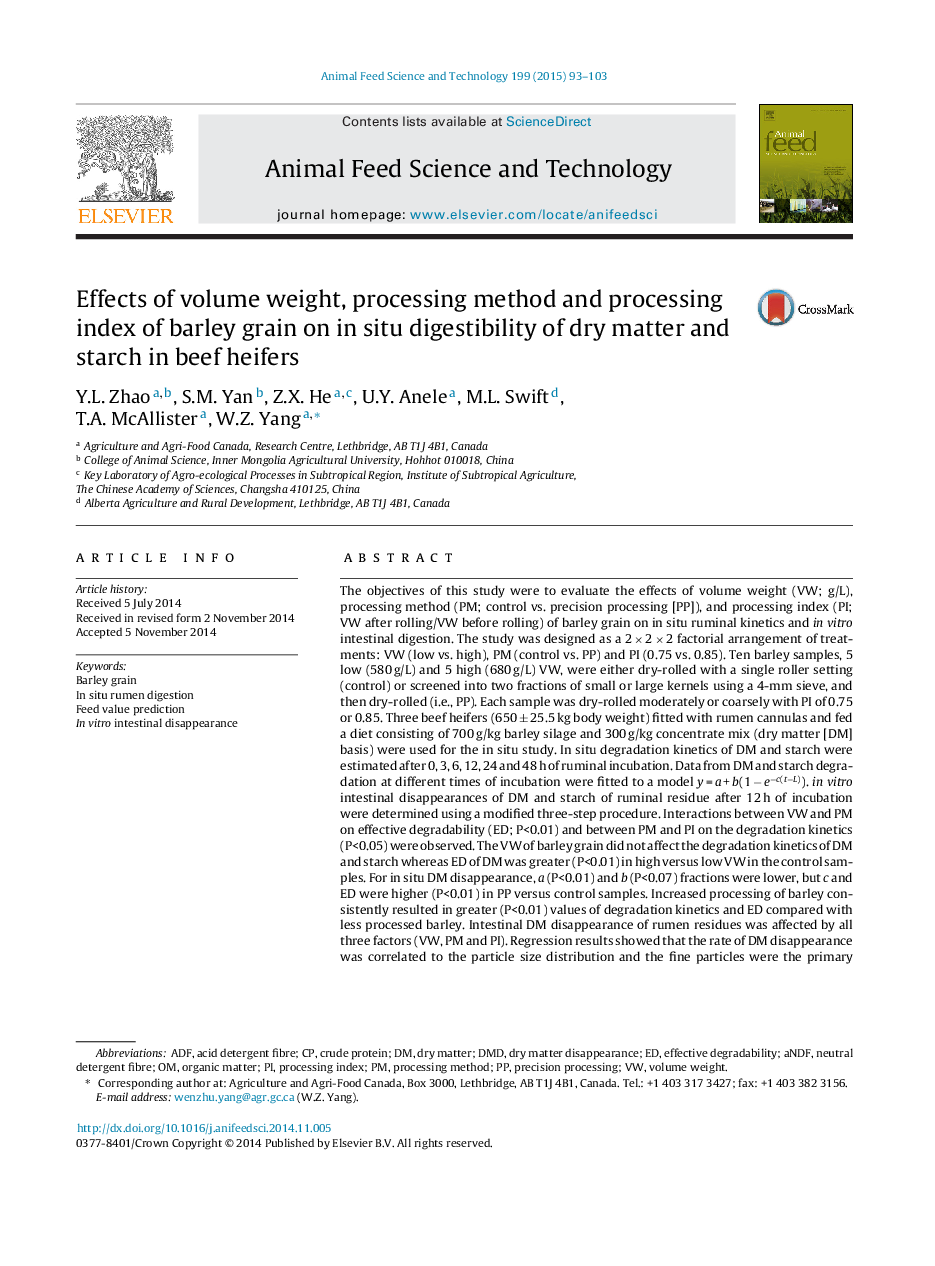| Article ID | Journal | Published Year | Pages | File Type |
|---|---|---|---|---|
| 8491438 | Animal Feed Science and Technology | 2015 | 11 Pages |
Abstract
The objectives of this study were to evaluate the effects of volume weight (VW; g/L), processing method (PM; control vs. precision processing [PP]), and processing index (PI; VW after rolling/VW before rolling) of barley grain on in situ ruminal kinetics and in vitro intestinal digestion. The study was designed as a 2 Ã 2 Ã 2 factorial arrangement of treatments: VW (low vs. high), PM (control vs. PP) and PI (0.75 vs. 0.85). Ten barley samples, 5 low (580 g/L) and 5 high (680 g/L) VW, were either dry-rolled with a single roller setting (control) or screened into two fractions of small or large kernels using a 4-mm sieve, and then dry-rolled (i.e., PP). Each sample was dry-rolled moderately or coarsely with PI of 0.75 or 0.85. Three beef heifers (650 ± 25.5 kg body weight) fitted with rumen cannulas and fed a diet consisting of 700 g/kg barley silage and 300 g/kg concentrate mix (dry matter [DM] basis) were used for the in situ study. In situ degradation kinetics of DM and starch were estimated after 0, 3, 6, 12, 24 and 48 h of ruminal incubation. Data from DM and starch degradation at different times of incubation were fitted to a model y = a + b(1 â eâc(tâL)). in vitro intestinal disappearances of DM and starch of ruminal residue after 12 h of incubation were determined using a modified three-step procedure. Interactions between VW and PM on effective degradability (ED; P<0.01) and between PM and PI on the degradation kinetics (P<0.05) were observed. The VW of barley grain did not affect the degradation kinetics of DM and starch whereas ED of DM was greater (P<0.01) in high versus low VW in the control samples. For in situ DM disappearance, a (P<0.01) and b (P<0.07) fractions were lower, but c and ED were higher (P<0.01) in PP versus control samples. Increased processing of barley consistently resulted in greater (P<0.01) values of degradation kinetics and ED compared with less processed barley. Intestinal DM disappearance of rumen residues was affected by all three factors (VW, PM and PI). Regression results showed that the rate of DM disappearance was correlated to the particle size distribution and the fine particles were the primary predictor. The results demonstrated that the PP approach and manipulating PI are effective ways to optimize rumen digestion of barley grain. This suggests that a concise and reliable method to predict rumen digestion of barley may be developed based on measuring the fines content of processed barley.
Keywords
Related Topics
Life Sciences
Agricultural and Biological Sciences
Animal Science and Zoology
Authors
Y.L. Zhao, S.M. Yan, Z.X. He, U.Y. Anele, M.L. Swift, T.A. McAllister, W.Z. Yang,
